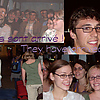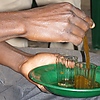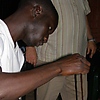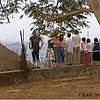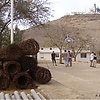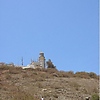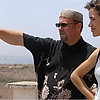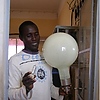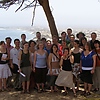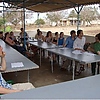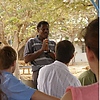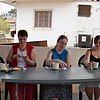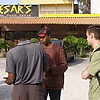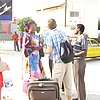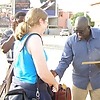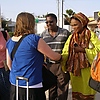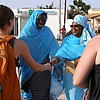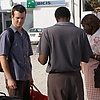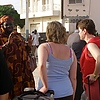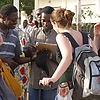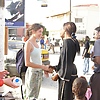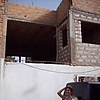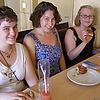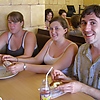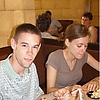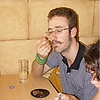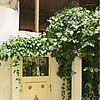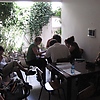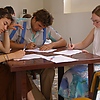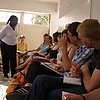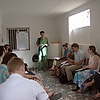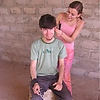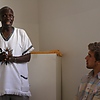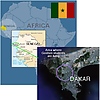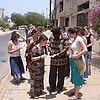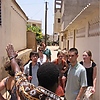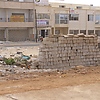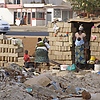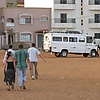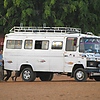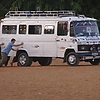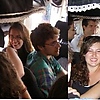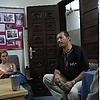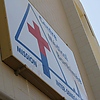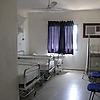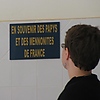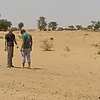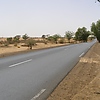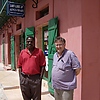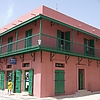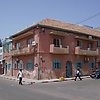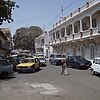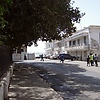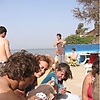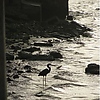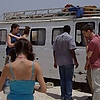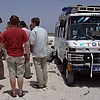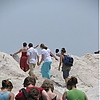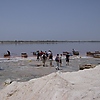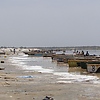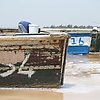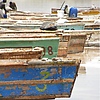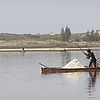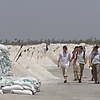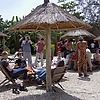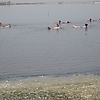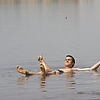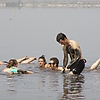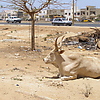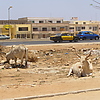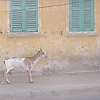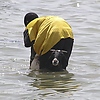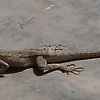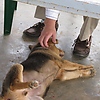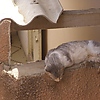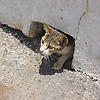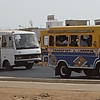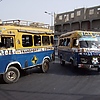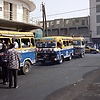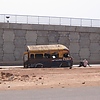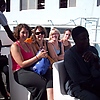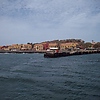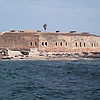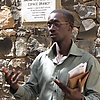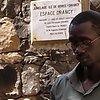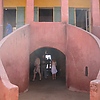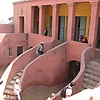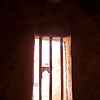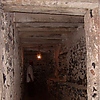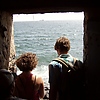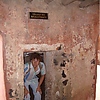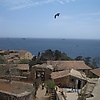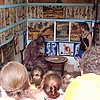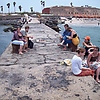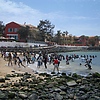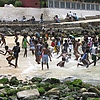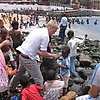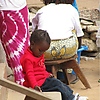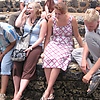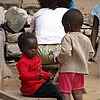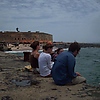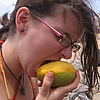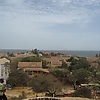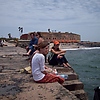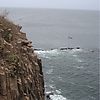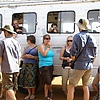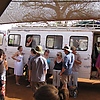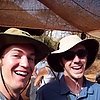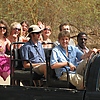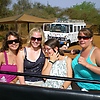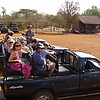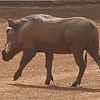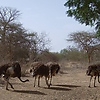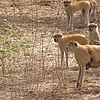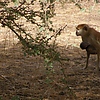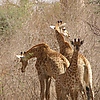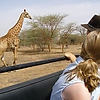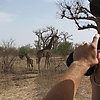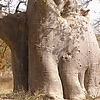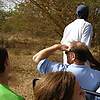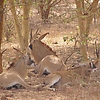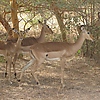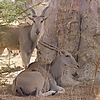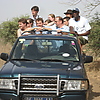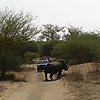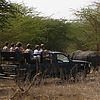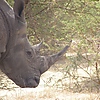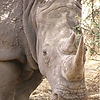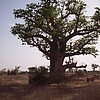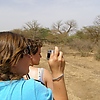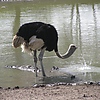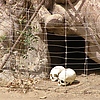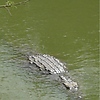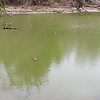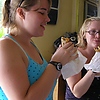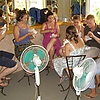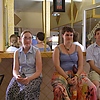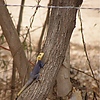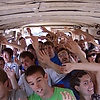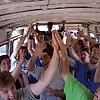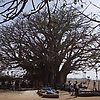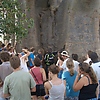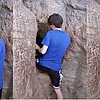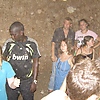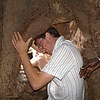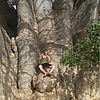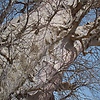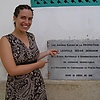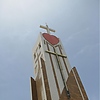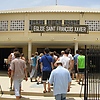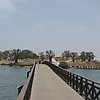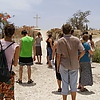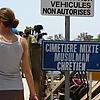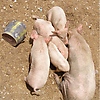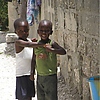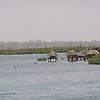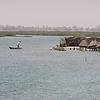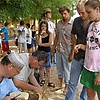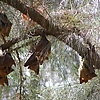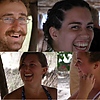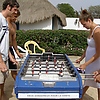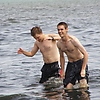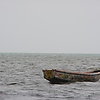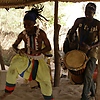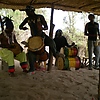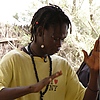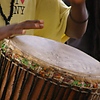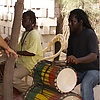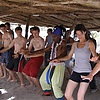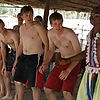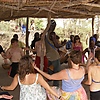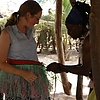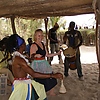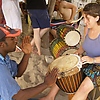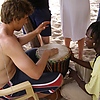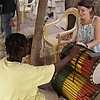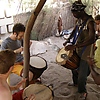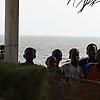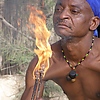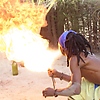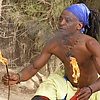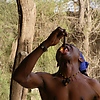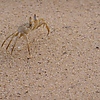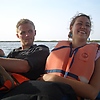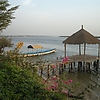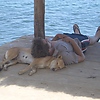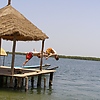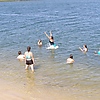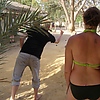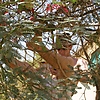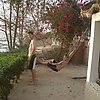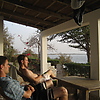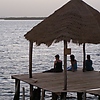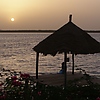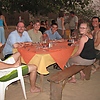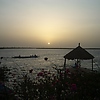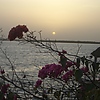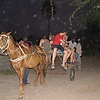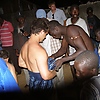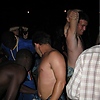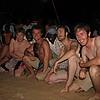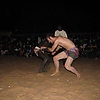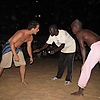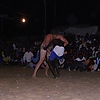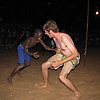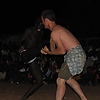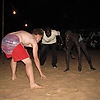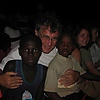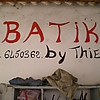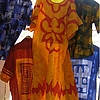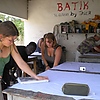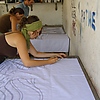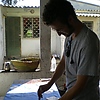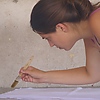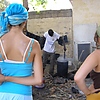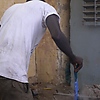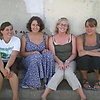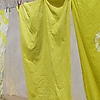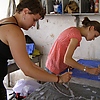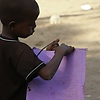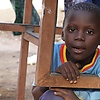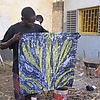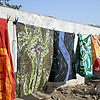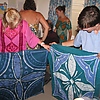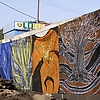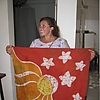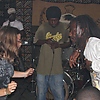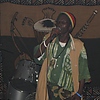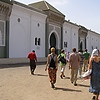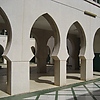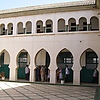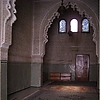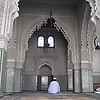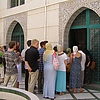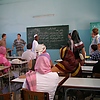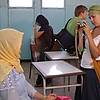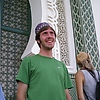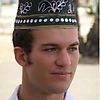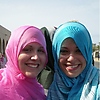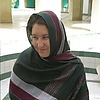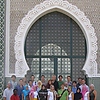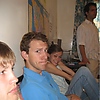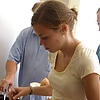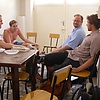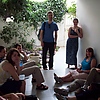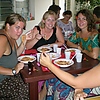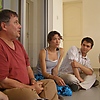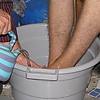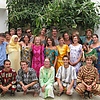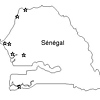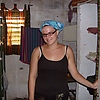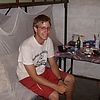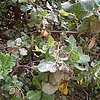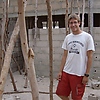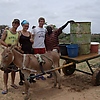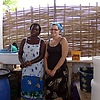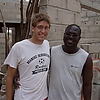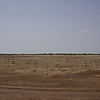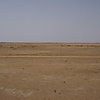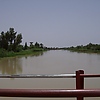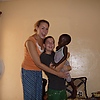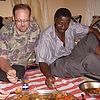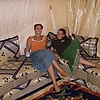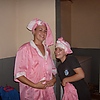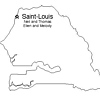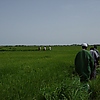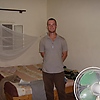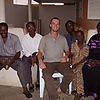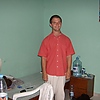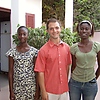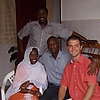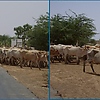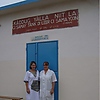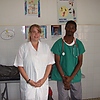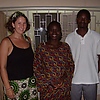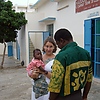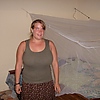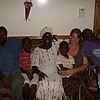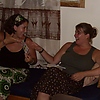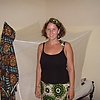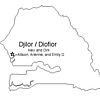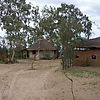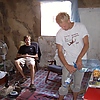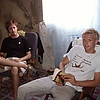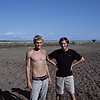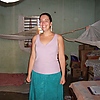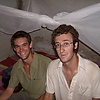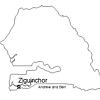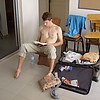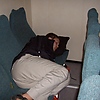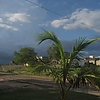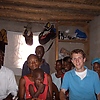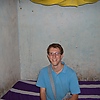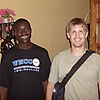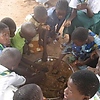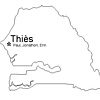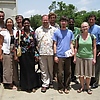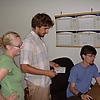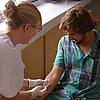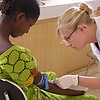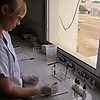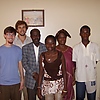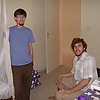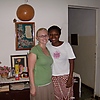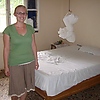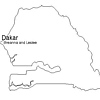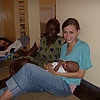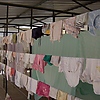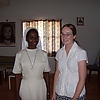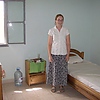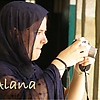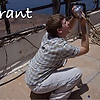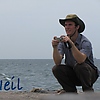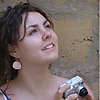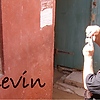Summer 2008 SST Unit in Senegal
The Summer 2008 unit has returned but we'll leave this record of their journey here.
Thu, 1 May 2008Students Arrive in Dakar
Posted at 21:51 #
A Ceremonial Welcome
Posted at 22:15 #
Fri, 2 May 2008
Waking up in Africa
Posted at 20:52 #
Beginning Orientation
Posted at 06:05 #
Tue, 13 May 2008
Meeting Families
Posted at 21:25 #
Orientation Wrap-up
Posted at 21:44 #
Meet Chez Goshen Melle. Aïssatou Tounkara gave an introduction
to the Wolof language last week. We soon
discovered
that undertaking even a few words of Wolof opens
the door of an already hospitable people even wider
here. While the language proves a formidable chore
to master, there is abundant grace from our hosts
for even the most feeble of attempts.
Dr. Bryan Steele, an American medical doctor
working in Dakar, gave a brief yet thorough
overview of medical issues in Senegal. With 15
years experience here, he was able to give us a few
wise tips in cross-cultural relations as well.
Following a quick haircut by Leslee in the
upstairs salon (another SST exclusive), it was back
to the books. Professor Ibrahima Thioub is from
the Department of History at the Université Cheikh
Anta Diop and lectured on the formulative
history of Senegal and Islam. Recognized
internationally, he has worked with numerous
projects, including UNESCO, and written extensively
on both subjects.
Posted at 22:59 #
Getting to Know Senegal
Maps are difficult to find here and not often helpful
when asking directions. The Senegalese use
landmarks when giving directions, so be sure to
note the local pharmacie and fruit stand
when familiarizing yourself. But, no worries!
Getting lost is another opportunity to catch some
rest in the shade and converse with the locals. This
week we are enjoying a cold front with
temperatures getting down into the 70's. Dakar is
currently in the dry season. In June we will
experience a transition to a humid season and
much higher temperatures. Unlike the "cooler"
Dakar, some interior locations can reach as high as
130°F.
Dakar's population is an estimated 2.5 million, and
more people move into the outlying districts daily.
The amount of construction here is mind-boggling.
Stacks of cement blocks are in front of virtually
every row of buildings. But use caution when
approaching these stacks from the side opposite
traffic. Not infrequently you will find a family living
inside, as seen in these photos from both
perspectives (right).
Posted at 16:07 #
Trip to Saint-Louis and Thies
Two hours later we arrived at our first stop in Thies
to visit the Senegalese Interior Mission. There we
picked up sandwiches for the trip to Saint-Louis
and listened to Pastor José Oliveria speak about
missions and the presence of NGO's in Senegal and
the specific programs they are overseeing in
Thies.
Sandwiches in hand, we moved along to see a
medical clinic that was partially funded by the
Mennonites in France. A major facility in Thies, this
clinic is drawing close to completion of a third floor
with full hospital status and capability! Okay, not
everyone in the photo was excited about the part
that is still
under construction...
For many of us it was a first time in the desert and
merited stopping to see just how hot it felt outside
the bus. A long road and 3 hours later we came to
our destination. Saint-Louis is about the size of
South Bend, Indiana and was the capital of Senegal
during the country's French colonial period
(established in 1659). It lies close to the northern
coastal border of Mauritania. The Saint-Louis
island is now a UNESCO World Heritage Site and
exhibits the influence of quaint colonial
architecture. At our waterfront hotel we took in
some much needed relaxation and intimate
fellowship time. It was a great place to reflect as
the sun passed gently away.
Posted at 19:05 #
Wed, 14 May 2008
Lac Rose
With a swift dig and another push out of the sand
our bus brought us close to the shoreline. Once we
climbed over the salt dunes, we could see
harvesters working to bring in the salt for drying.
Each boat will hold one ton of salt. Generally the
villagers work in communal industry and each work
team moves toward the top of the buyer-market
list to sell their salt in turn.
Similar to the Dead Sea, the salt content enables
people to float. Neil was not content with just
floating and decided to test the beneficial health
qualities of the lake's mud.
Posted at 20:51 #
Thu, 15 May 2008
Getting Acquainted by Peter and Paul
Animals by Peter
Animals aren’t hard to find in Senegal, even along
the dusty streets of Dakar. On our first walk as a
group down the VDN, Dakar’s biggest highway, we
encountered a rather large, rather uninhibited cow
running loose along the road. She didn’t seem to
be planning to stop anytime soon, and made for a
pretty surprising introduction to the human and
animal traffic of Dakar’s streets.
Some students experience Senegal’s animal
population a bit closer to their homes. I have a
goat on the roof of my house who keeps me
company when I read up there. Ben has a tired but
friendly pit-bull that spends its time on his house’s
balcony. Some families have dogs, but they’re not
as popular as one might think, as dogs are one of
many things that render Muslims unclean. Scrawny,
dirty kittens can be found as well, struggling to
maneuver among the trash and sand often present
in much of the urban scene we’ve experienced so
far.
Transportation by Peter
Chaotic might be the best word to describe
transportation in Dakar, at least on first glance.
Taxis brush your arm if you’re too close to the
road, cars and busses don’t even try to stay in their
lanes (if lanes are even painted on the street), and
car rapides stop in the middle of the road
if the driver thinks he can pick up another
passenger.
These car rapides are always painted blue
on bottom, yellow on top, and are usually further
customized with artwork often unique to each
vehicle. Usually a boy of around 15 hangs off the
back of the vehicle, scouting out potential
passengers. Once found, he’ll bang a coin on the
scratched glass of the speeding car, signaling to
the driver to stop and make the pickup.
Considering how frenetic Senegalese transportation
seems to be, we have been surprised by how few
accidents occur. Drivers and pedestrians alike are
fully used to a more aggressive approach to getting
around, and know how to avoid accidents that to us
seem inevitable. Plus, riding to class on the back of
a speeding car rapide is a great way to
wake up completely before three hours of French or
Wolof each morning!
How to Drive Senegalese-Style by
Paul
1. Don’t waste space: The number of lanes is equal
to the width of the road divided by the width of a
car. If the road doesn’t offer enough room, drive
with two wheels on the sidewalk. If you brush a
pedestrian, you’ve judged your space perfectly.
2. Sidewalks are not sacred: Cars frequent wider
sidewalks, as does the occasional horsecart. On
narrower sidewalks, keep an eye out for
motorcycles and mopeds.
3. Cows always have the right of way.
4. Assertiveness is a virtue: If timid Senegalese
drivers exist, they probably don’t get far. Most
driving maneuvers are founded on others’ desire to
avoid accidents.
5. Use your horn: It’s at least as important as the
brake pedal. As an added bonus, it can be used by
taxi drivers to solicit business.
Posted at 17:30 #
Mon, 26 May 2008
Gorée Island
You may recognize the famous pink staircases from
many textbook photographs. Standing in such a
place brings "story" fully into history and is what I
love about SST. Beyond the colonized icon is a
network of barred holding cells and tunnels leading
to a view of the ocean through the "door of no
return." Jonathan demonstrates the size of a small
windowless cell under the stairs where "unruly"
prisoners were
placed for up to 3 months. It seemed difficult to
reconcile the casual
contemporary commerce of Gorée, now an island
full of vendors and artisans, with the gravity of it's
past. There was ample time to search the
island, refresh our minds, and meet the people. An
abundance of school children playing and
enjoying the beach brought an ironic balance to the
day at Gorée.
Posted at 19:42 #
Sat, 14 Jun 2008
Bandia Game Park
It was a great feeling just to be in the open, away
from city air, and out in the bush with nature.
Some ostriches and a hornbill opened the tour,
then we came upon two
groups of monkeys engaged in a territorial dispute.
Who doesn't love monkeys? After an interesting
interaction, our appetite was wet for more of the
wild. Soon we were fortunate to see a two-week
old giraffe with it's family. Still no lions, but an
elephant tree.
Some sweet Roan antelope and impalas made great
photos. The West African forest buffalo were
plentiful and the ostriches were interesting. Still no
lions.
En fin! A male white rhino came across our
trail and we circled back to get a closer look. Our
guides brought us in range to get out and take
close-up photos of the male and the female. We
continued through the park with a look at the male
ostrich, which according to our guide was actually
more dangerous than the rhinos. A baobab holds
the remains of the griot, nomadic
musicians of old, that were buried inside the trees
in order to protect the villages from the bad luck of
burying them in the land.
The park holds a
fair amount of crocodiles and a variety of animals in
hiding for our visit. No lions. Still, after a final
look at the killer tortoise guarding the
exit, we had a very fulfilling day!
Posted at 19:07 #
Sun, 15 Jun 2008
Baobab Sacré
After an exhilarating ride down the long winding
road to the biggest baobab in Senegal, on
a full stomach and what we affectionately call
"roller-bus," we arrived safely to our destination.
The famous baobab is surrounded by vendors and
souvenirs, but with a guide we were able to get
around to the opening of the tree. The baobab has
an amazing longevity of up to 2,000 years. This
tree is hollow and has an opening where you can
crawl into the cavity and then stand up. A cavity
large enough that the entire group of 23, plus a
couple extra, crawled inside with room to spare.
Paul demonstrates the man-eating-baobab
technique. Chase shows us just what one does
inside a boabab and Andrew sits enthroned on the
outside to compare its immense size. Melody,
Ellen, Alana, Erin, and Emily still look great in the
100 degree heat.
Posted at 20:47 #
Island of Fadiouth
After a night at Pointe-Sarène we headed further
south to the island at Joal-Fadiout.
The historic house-museum of Leopold Sedar Senghor, the first president of Senegal, was on the way. A poet, politician, and cultural theorist, Senghor is often referred to as one of the most important intellectuals in the last century.
Museums are nice, but we were happy to reach the islands again. In stark
contrast to the muslim country of Senegal, Joal-
Fadiout has an island dominated by a Catholic
population. A long footbridge connects you to
another place of contrasts with the famous church,
Église Saint François Xavier, and the Sacré Cœur
towering over the entrance. Once across the bridge
we saw the presence of pigs openly for the first
time. The same bridge brings two contrasting
worlds of religion together in a coming and going
display of Senegal's ability to live in peaceful
tolerance. Across a second bridge to the cemetery
island we could see the ancient style grain huts
where grain is stored apart from land to ensure
livelihood in the event of devastating fires. After a
refreshing time in the water, everyone met under
some shade to have a lunch and get refueled for
the next road trip further south. While eating we
realized we had chosen a spot directly under the
company of sleeping bats.
Posted at 21:22 #
Mon, 16 Jun 2008
Pointe-Sarène
Until the rainy season comes later in June, the
beach at Pointe-Sarène is, shall we say, a bit
mucky. Several braved the water with some
trepidation, while others found shelling an inviting
alternative. We met the local fishermen coming in
with their day's catch. The entire community helps
pull each boat in and all the families greet them
with melodic field hollers. The dogs wait patiently
at the edge of activity like gentle guardians of the
village.
After a fish dinner we gathered under an open
shelter to see djembé drumming and
dance. Not content to just listen, the invitation to
experience it firsthand (and the costuming) was
just too much temptation to resist. Lessons in
djembé drumming followed. By this time
the surrounding fences were lined with curious
young spectators and they were not disappointed
when the performers ended with a Sufi fakir fire
eater. Even the crabs smile in Pointe-Sarène!
Posted at 16:33 #
Mar Lodj
"It doesn't get any better than this" was a phrase
à propros for Mar Lodj. After two days of
grueling bus rides through the desert heat
everyone was rewarded with a surprising retreat.
We boarded the long senegalese style boats, made
from kapok, to an area abundant with small islands
and completely surrounded by oyster filled
mangroves and clear water. The sandy beach at
Le Bazouk du Saloum was a welcome site
and the quiet removed island was a great place to
let sleeping dogs lie, literally. Not everyone rested.
Eventually the temptation to "jump in" was just too
great. Frisbee, badminton among the mangoes,
and the French inspired game of petanque kept
everyone busy. For those with a more quiet idea of
relaxation there were plenty of hammocks to spare.
Not long after dark, our hosts served us a lovely
meal of meat and rice by the light of the lanterns
right out on the beach.
Into a Night of Mourning
In the dark quiet night, under the stars, we received
the tragic news about a fellow Goshen College
student,
Deanne Binde, who was just killed in an automobile
accident in Minnesota. As students rallied together
in search of comfort, the beautiful healing of music
was released into the air. The immense sky,
overflowing with stars, seemed to join us together
in mourning with our communities at home and in
other SST locations around the world. Students
lingered on into the difficult night ahead displaying
courage and great comfort toward each other.
Posted at 19:11 #
Tue, 17 Jun 2008
Lutte
The dawn brought a peaceful day of rest at Mar
Lodj on Sunday, May 25. When evening came we
were invited to a neighboring village for Lutte
sénégalaise, a traditional folk wrestling. In the
complete dark of night, we crossed the island in
kind of a Senegalese sleigh ride through dusty
fields and forest. Thankfully, our
horses knew the way in the dark, as there are no
street lamps or lights to follow. We came upon an
electrically charged atmosphere of musical chanting,
drums, and hundreds of villagers. It is truly a
community event. Wrestlers work hard to build up
their athletic strength and ability, but not
uncommonly turn in the end to the "magic tonics"
of a marabou insuring their chances of victory.
Lutte is no
respecter of persons and even prominent visitors
would be encouraged to participate. Transcending
all cultural barriers, our own GC team was suited up
(or down in this case) for a match with the locals.
Be sure to watch the video of our own star wrestler,
Chase, from "team GC," for a better look into the
atmosphere.
Posted at 20:20 #
Wed, 18 Jun 2008
Batik
For an artistic change of scenery, we all tried our hand at the art of batik, a process of hand-painted wax-resist dying on textile. In Senegal batik can be seen in abundance on fabrics, clothing, and housewares. We worked with a master batik artist in Medina, M. Thier, that had his own retail shop and his former apprentice, M. Magueye Gueye, now an accomplished batik artist in his own right.
Students worked out their own designs, in pencil first, and then painted the non-dye areas with wax melted over small charcoal stoves. When ready, the cloth is placed into the first color of dye and the process repeated for each subsequent color used. Our simple designs with only two colors of dye took an entire day to complete, evidence of the amount of time necessary for intricate designs with multiple colors.
Once the fabric is dyed it has to hang for drying before the next process. Between coats, the students found time to chat, play cards, and interact with the curious "little helpers" that gathered.
Posted at 07:55 #
Night-Life
by Benjamin
Across West Africa, Dakar is known for its night-
life--or, more accurately, early morning life. After
arriving in the city, the students discovered that
most of the dance clubs only start swinging after
midnight (on the early side) and peak around three
or four in the morning. Those of us living with
young-adults know how much most Senegalese
look forward to Samedi Soir (Saturday
Night), when they can go dancing with their friends
or their confused American host siblings.
Samedi Soir is such an important part of
the social life here that one street vender, annoyed
at my refusals, exclaimed that without the money
he couldn't take his girlfriend out dancing--as if
that would convince me to buy a soccer jersey.
In addition to Samedi Soir, many SSTers
celebrated Jeudi (Thursday) Soir.
We had no class on Fridays, and, each Thursday, a
jazz club spiced things up with an evening of live
Reggae. The bands played Bob Marley hits
interspersed with songs in French and Wolof.
Posted at 18:46 #
Thu, 19 Jun 2008
Mosque
We had been waiting for weeks to get a look inside the Grande Mosquée de Dakar and finally it was arranged just in time before service departure. Preparations were made for our visit and, to show proper sensitivity to religious protocol, it was ensured that there would be nobody around during our visit and tour (except vendors, of course).
Our guide brought us through the grand arched halls and symmetric decorations to the door of an inner prayer room where we removed our shoes and entered in very small groups. Once inside, the incredible attention to geometric detail was almost overwhelming. Each repeating motif was done in deep relief, pressed into the plaster and trim work. The work was seamless and mathematically exacting without breaking into any partial shapes.
What can we say? In a setting like this, everyone did their utmost to assimilate the surroundings. A tour of the complex, a quick Arabic lesson, and we were ready for our close-ups. Perhaps a little too close for some, so we posed for a broader group shot!
Posted at 20:42 #
Mon, 7 Jul 2008
TRANSITION TO SERVICE
I believe some of the best moments in life are still
locked up in the unknown of what's next. Our last
night in Dakar was a chance to anticipate and plan
for some of those moments. We enjoyed a
spaghetti meal together and shared some thoughts.
We began the process of good-byes to Chez
Goshen and to look toward the unknown of service.
Chez Goshen is many things. It is Chez SST and
Chez French Class by day, Chez Don and Chez
Kevin by night. It is a place to get band-aids and
sneak extra time on the internet. It is full of
laughter and discussion during break times and
filled with singing before each weekly meal. Chez
Goshen serves American sloppy joe and potato
salad that has no resemblance in taste.
Occasionally it is a place for the sick to rest, but
more often it is a drinking station and bathroom
stop between long walks in the desert heat. It is
group story time with a good book. It is refuge. It
is card games. It is fun.
And now it is silent.
A full, but successful Study-Term behind us and
everyone was ready to bust out into the country's
interior and transition to a Service-Term. The
mango tree at Chez Goshen seemed like the best
place to snatch a group shot before service
departures the next morning. Students are located
from north to south in Sénégal.
Posted at 19:25 #
Tue, 8 Jul 2008
Gorom
Grant and Dara
Our first service visit was about an hour and a half
drive outside of Dakar into a completely remote
village setting. Gorom is the location of a YWAM
project that involves construction of a new medical
dispensary, a micro-agriculture operation, and
perpetual relationship building with the local
villages. Service in Gorom means helping with the
construction, gardening, feeding chickens, and
cooking meals.
Set next to a cashew grove, Dara
and Grant are learning to eat the cashew's apple-
like fruit, as well as the raw nuts. Their love of the
culture and countryside is impossible to miss and
evident in the photos we took. There is plenty of
time for reflection in the evenings. Grant says that
SST is filled with "...moments that push you beyond
what you know into what you must figure out."
Posted at 20:25 #
Richard-Toll
Alana and Lydia
The former colonial town of Richard-Toll lies at the
border of Mauritania on the south bank of the
Sénégal river and is our farthest point north.
However, driving north toward our destination the
landscape becomes increasingly barren and one
begins to wonder whether there will again be water.
The stark contrast of green lush fields in the north
soon appears and the river running through it
become a welcome site. We were very happy to find
Lydia and Alana in good
spirits and they welcomed us with a traditional meal
of Thiebu Dien (rice and fish).
When they
are not "reclining" in their room there is plenty to
do at the traditional dairy where they slip into their
appropriate work clothes, process, package, and
refrigerate the milk product. Besides the two-
room traditional dairy, Alana and Lydia will also be
working at a slightly more automated dairy farm.
Both dairies, administered by AESCAW, are owned
and operated by Senegalese women.
Posted at 07:33 #
Saint-Louis
Neil and Thomas
More luscious green accompanied us along the
route to Saint-Louis where we met Thomas and
Neil working in the rice fields. The green fields can
be deceiving, because the heat was still in the 90's
(F) during our brief stay. While rice is primarily
grown in the south of the country the northern area
of Saint-Louis has been growing rice since before
the first millennium CE. On Fridays, the men go to
a small garden complex close to town and try their
farming skills on eggplants, peppers, onions, mint,
and strawberries.
Ellen and Melody
En route to the city center, where our
students live, we had a typical cow-crossing delay.
The four students are all living in separate
neighborhoods of Saint-Louis, but they look
forward to meeting each other on Friday evenings.
We met Ellen and Melody the next morning at their
service location, Kaddug Yalla, a clinic and school.
Ellen is working in the clinic assisting with local
patients and keeping her nursing skills sharp.
Melody is working with the school for girls in the
same building, where they teach a variety of
practical skills. Melody has the added perk of
caring for her host baby sister.
Posted at 13:27 #
Djilor / Diofior
Alex and Dirk
We left the colonial northern setting and traveled
south on a return trip to the beautiful region of
Fatick to find Dirk and Alex in the remote village of
Djilor, where former president and poet Senghor
grew up. The prestige of this setting is no
indication of its surroundings, however, and it
remains one of the more isolated village locations
we have. Dirk and Alex are keeping up on their
reading, spending a lot of time walking, and even
working occasionally on their lutting
(wrestling) skills with the locals.
For service, the men are helping with whatever the
local farmers and fisherman need. Their schedule
is completely driven by season and weather. The
morning we left they were hoping to begin plowing
and planting (by horse) in the fields. They often
walk an hour and a half for a visit to the "nearby"
village of Diofior where Arienne, Allison, and Emily
D began their Service-Term.
Allison, Arienne, and Emily D
In Diofior the ladies are packed and ready to make
a service move. After an assessment of their service
location and a conversation with their hosts, we
decided to move them to work on a list of projects
already underway in the city of Kaolack, located
east about two hours by car. Before the journey, we
awakened to a beautiful sunrise on the water,
curious birds, and ladies pounding millet into flour.
Posted at 15:14 #
Kaolack
Chase, Emily S, and Peter
"Kaolack is hot!" This was the response from every
person that we told our destination to. If the
Senegalese think it is hot in Kaolack, it must be,
right? Let's just confirm that everyone there is
"glowing." But an abundance of smiles are
everywhere in Kaolack. Our students are actively
engaged in the community, their families, and
"10,000 Girls," the NGO where they are working. In
between teaching classes at the all-girls school,
students are designing and developing a "book
mobile" for the surrounding community, planning a
camp/seminar for the girls there, and a variety of
other tasks appointed to them by their host,
Viola
Vaughn, lovingly know to all of Kaolack as
Mamm (grandma
in Wolof). A native of Detroit, Mamm has
spearheaded this moving organization in her
retirement. Be sure to check out the CNN video link
above.
Posted at 16:05 #
Fri, 18 Jul 2008
Ziguinchor
Andrew and Ben
Ziguinchor is our most southern location and a new
one for Sénégal SST. With a population of about
230,000, Ziguinchor was the first European
settlement in the area. It was founded by the
Portuguese and one can still hear Portuguese creole
spoken in the region. After a long wait in Dakar,
Ben and Andrew were anxious to get to their new
home and begin service. The trip there was longer
than most and they traveled overnight by ship.
Ben was greeted by 15 siblings and lives in the
quartier of Lindiaye on the edge of
Ziguinchor. Ben is working for AJAC Local, an NGO
that nurtures and equips micro-enterprise in the
region.
Andrew is living in a much smaller family of three.
He is working for Afrique Enjeux, another NGO
based in Ziguinchor. Afique Enjeux is a
peacekeeping organization that encourages laying
arms aside and refocusing on economic and
agricultural issues in the region.
Posted at 15:09 #
Thiès
Thiès is a great place outside of Dakar and home of
the Mission Inter Senegal (MIS) office. MIS is
coordinating and assisting a myriad of programs
throughout Senegal that include women's ministry,
food and medical aid, micro-financing, children's
programs, and water well projects. Jon and Paul
(and kitty) are giving a hand in the offices most
days. Erin is busy nearby taking and testing blood
in the lab of a new clinic MIS has been building in
Thiès. The entire SST group had visited the same
clinic earlier in May. SST Director, Thomas Meyers,
was in Senegal and traveled to Thiès for the visit.
The students were very happy to see him... or was
it the mail he was carrying?
Annelise Goldschmidt, seated at her desk, is a
longtime friend of SST and Goshen College. We
would like to thank her for the measureless
work she does behind the scenes at MIS and the
SST program.
Posted at 15:10 #
Dakar
Last, but certainly not least, are the two service
positions in Dakar. Leslee and Breanna remained in
the nation's capitol city for Service-Term. Leslee is
working at la pouponnière (the baby doll
house), where orphaned babies are taken care of.
Most of the babies are under 6 months old. During
our visit they were caring for 48 infants. Breanna
is working with the Missionary Sisters of Our Lady
in Africa, the oldest convent in Senegal.
Celebrating 150 years, it was founded in 1848.
With a unique view inside life not immediately
visible here, both Leslee and Breanna are having
exceptional and unique experiences during service
by staying in Dakar.
Posted at 15:33 #
Behind the Cameras
Photographers spent a lot of time looking through
their lenses in order to give people a glimpse into
our experiences. It takes a lot of eyes looking
from different angles to even get close to the "real
picture" of an experience like SST. We were very
privileged to have such a team of good eyes
looking through cameras on our behalf. We want
to thank them for their visual contribution,
documenting our time here together.
Posted at 17:01 #
![]()
International Education Office
Kevin Koch
kevinak@goshen.edu
+1 (574) 535-7346
